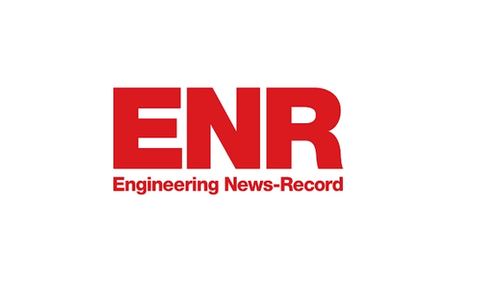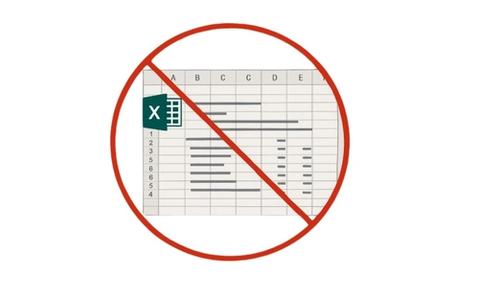Automating the Pre-Construction Process
July 20, 2013

In the modern age of technology, it is surprising how many general contractors are not automating their pre-construction process. Recent polls show that 45% of commercial general contractors still send out bid invitations and addenda notices using their own email program and fax machine, and then track who is bidding in an Excel spreadsheet. Not so surprisingly, we couldn’t find one general contractor that switched back to the Stone Age (their old conventional methods) after migrating to an automated bid invitation software system.
Most bid invitation systems are now cloud-based, meaning the software and data are hosted and managed offsite, not on your own server. The older generation is sometimes not as trusting to store their data on a server outside their office. As a younger generation enters the construction industry, more employees are willing and trusting to store their data on the cloud. They are excited about the latest technology that is enabling pre-construction tasks to be completed in a fraction of the time. Technology can save time and money, help companies bid more jobs in less time and perhaps with less employees. More general contractors are taking the leap into the wonderful world of automation.
Bid Invitation Software Highlights Some key benefits of an automated bid invitation system include: – Subcontractor database management to organize contacts efficiently. – Select and solicit subs by trade fast. – Send bid invitations via email or fax in one click. – Track who will or will not bid to make sure you have adequate coverage. – Send notices such as an Addendum in a fast and organized method. – Upload plans and bid documents for easy download by invited subs. – Automate the Prequalification process to reduce paperwork.
Subcontractor Database Management Of all the general contractors that were looking for a way to automate their business, one of the top reasons was to manage their subcontractor database more effectively and efficiently. Most had their subs in Excel, which is difficult to share among other estimators in the office. By migrating to a web-based centralized database of subs, all your employees and estimators can have access to the most recent sub and vendor contact information. They can write notes about subs that their fellow estimators can see. In addition to organizing their subs into trades, they can assign subs into various groups such as minority certification, geographic areas willing to work, labor type (Union, Non-union), Qualified/Unqualified, and more. Assigning subs into Groups can be helpful in narrowing down the list of subs to invite, or to print special reports such as a “Good Faith Effort Report” showing minority subs solicited for government projects.
Many systems allow subs to keep their contact information updated (some allow subs to update their info automatically while other systems give the GC control of what gets updated). Some systems allow new subs to sign up on the GC’s website, thus eliminating the need for the GC to type in the sub’s contact information, trades they perform and other data they want to track.
Selecting Which Subs to Invite When using an automated bid invitation system, the sub selection process is much more efficient than conventional methods because the GC can select and send bid invitations to only those subs in the trades they need in just a few clicks. It is also helpful to narrow down the list to those that are more likely to bid on the project based on a certain geographic area for example. Subs can get annoyed when invited to bid on projects outside their geographic area they are willing to work.
Most GCs have told us that speed and ease-of-use of the sub selection process are the most important factors. Some GCs want a system that allows many choices and steps to help narrow down their list of subs, while others think too many steps are cumbersome and complicated. There are many systems available with more or less functionality. The user may or may not want to sacrifice speed and ease-of-use in exchange for more functionality. Most offer demonstrations that allow you to compare a few and decide what is most important to your company.
Sending Bid Invitations Most systems allow you to send via email or fax, or even both to certain subs, all in one click. Faxes normally are sent through the software provider’s fax server so you do not need a fax machine. Email is the preferred sending method, but faxing – believe it or not – still has a purpose! Emails change as employees change jobs. For example, we sometimes help GCs update their failed emails as an added service we provide, actually calling subs with failed emails to see if they have an updated email. We were amazed to find how many subs wanted to switch to fax to make SURE they received their bid invitations, knowing that their employees’ emails change too often. Others create a generic email such as “estimating@” to solve this problem.
Tracking Who is Bidding Most systems allow subs to click a link in their email to respond “Yes” or “No”, and also allow you to update their responses manually if they call or fax back their response. It is helpful to track who will bid so that you know if you have enough coverage (bidders) in each trade. It is also helpful to know who is not bidding so that you don’t send them future notices for the project. Subs get annoyed when they receive additional correspondence on projects they don’t want to bid on, and may start to ignore your bid invitations. Many systems also track who actually submitted a bid, and also allow subs to upload their bids back to your system. Sending Notices After an invitation, there are usually additional notices that need to be sent. For example, it could be an Addendum, Amendment, Bid Date Change Notice, RFI Response, etc. Most bid invitation software programs allow GCs to send notices to only those that need them. For example, you may want to send an Addendum to only Electrical subs that have responded “Yes” they are bidding along with those that haven’t responded yet, but you rarely want to send something to subs that said they won’t bidding.
Online Plan Room Most systems allow you to post plans, specs and other bid documents for your subs to download. Some GCs have their own FTP site or other site that they use for this purpose. We have seen those GCs gradually migrate to the integrated online plan rooms built into their Bid Invitation Software system as they realize the benefits of having everything in one place for faster and easier access by their subs and vendors. For example, when a sub responds electronically (Yes or No to bid), it is more efficient for them to view the plans on the same screen rather than have to go elsewhere. Most systems offer support at the subcontractor level so you no longer need to handle technical issues or questions about how to download.
Automate the Prequalification Process Many GCs have a Prequalification form posted on their website for subs to download, fill out, and send back. Portions of the form will be basic company contact information. The GC then needs to compare the new company information on the form with their existing information in their database, which is time consuming. An automated form built into some Bid Invitation Software systems allows your subs to update their company information automatically (or upon your review and approval), as well as provide your required information about certifications, labor type, references, bonding, etc. The more robust systems allow your subs to upload documents such as insurance certificates or financial reports which are automatically stored in their record along with their completed Prequal form. Some systems allow GCs to create custom forms that can be embedded into their website so that subs can add themselves upon GC’s approval.
The Paradox Strangely enough, many general contractors say they are too busy to invest the time to automate their pre-construction process. The Paradox is obvious…by investing a little time automating, they become much more productive and less busy! Time is spent more efficiently which in turn lowers overhead expenses. Estimators focus more time on important tasks in the bidding process. Projects are bid more efficiently, perhaps with better coverage management which allows for lower bids, thus increasing the number of contracts won.
General contractors that are already using an automated bid invitation software system may also benefit by taking a step back to research whether their current system is meeting their needs. Is it time consuming and cumbersome? Is there another system that can save them time and money? Investing a little research time in other programs will help answer that question and give them piece of mind. Many systems offer a trial version to compare with their current system. And for those general contractors that are still in the Stone Age, they will no doubt see the benefit once they invest the time and take the leap into the 21st century of technology.
About the Author: Rick is the President of PipelineSuite© bid invitation software which he founded in 2002. Rick is also a member of the American Society of Professional Estimators, Orange County Chapter3. For more information, visit www.PipelineSuite.com . This article was published in the July-August 2013 edition of Design Cost Data magazine.
Recent Posts

What is In-Line Editing in Construction Software?
October 22, 2025

ENR Article Highlights PipelinePrequal Software
March 15, 2024

PipelineSuite announces Embedded experience App in Procore
March 15, 2024

Three Ways to Reduce Subcontractor Bid Fatigue
September 22, 2025

4 Reasons to Ditch Excel for Bid Leveling and Bid Tabulation in Preconstruction
July 30, 2025


